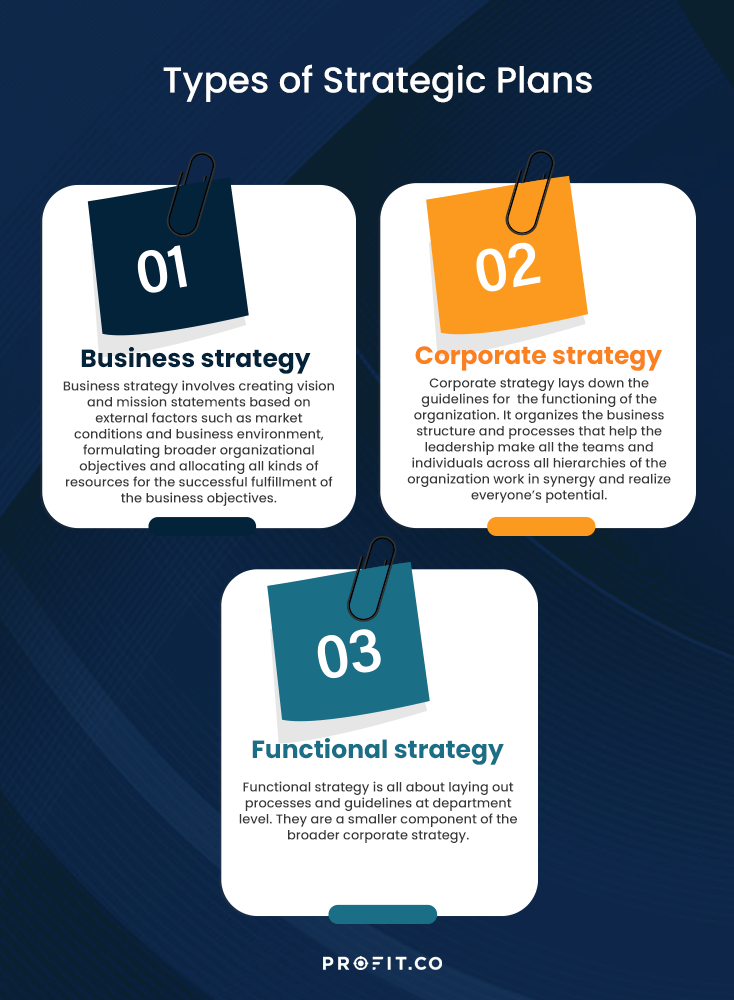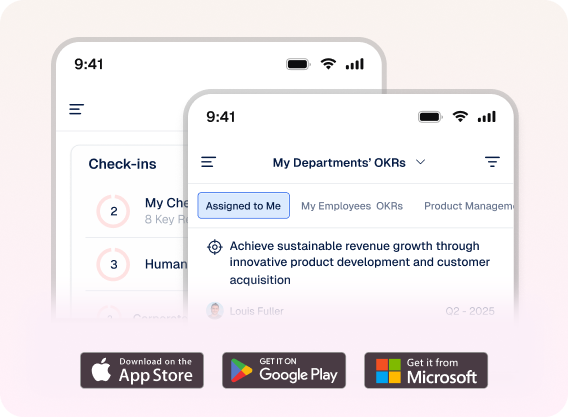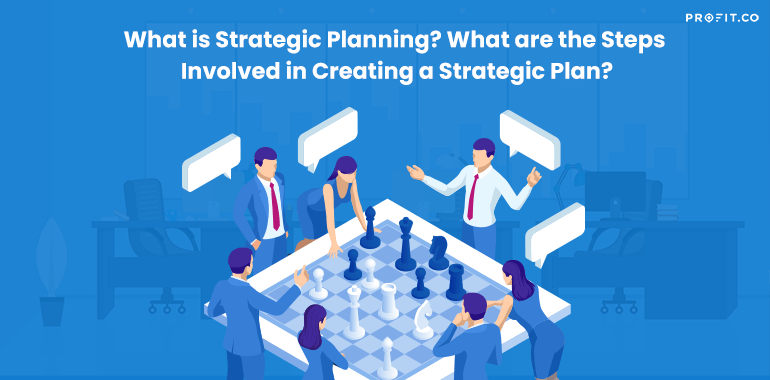Bright business ideas may come from anyone with the spirit of entrepreneurship, and it is relatively easy to determine the nature of business one may want to do. At the same time, it also brings out some of the most difficult questions including:
Strategic Planning: A Guide
1. Where to start in the first place?
2. What is the vision?
3. How to get going?
4. What are the objectives?
5. What all needs to be done to achieve the objectives? and
6. How to run this business successfully in a growth trajectory?
Without the answers to all these questions, it is impossible to take even one step in the right direction and go forward. Running an organization without a vision and a strong set of guiding principles, to show the way toward reaching that vision, is akin to navigating a ship without a compass. Even an established company may need to revisit them often, as the priorities of the organization change with time and constant course correction is inevitable.
Strategic planning is the compass that helps you navigate your business in the right direction.
What is strategic planning?
Strategic planning is the process of formulating a vision for the organization, identifying the goals and establishing a roadmap to realize these goals and achieve the vision of the organization. It focuses solely on mid-to long-term goals that can be attained over a long period of time, rather than determining details such as short-term goals, project planning and daily activities of the organization.

Types of strategic plans
Strategic planning is carried out in three different areas. Strategic plans can be categorized into:
1. Business strategy: A strategic plan around the business involves creating vision and mission statements based on external factors such as market conditions and business environment, formulating broader organizational objectives and allocating all kinds of resources for the successful fulfillment of the business objectives. It also involves assessing the strengths of the organization and identifying avenues of innovation, predicting the potential opportunities that may arise in the future, and devising ways to achieve growth and competitive advantage in the long run.
2. Corporate strategy: A strategic plan that is built around the corporate lays down the guidelines for the functioning of the organization. It organizes the business structure and puts in place the processes that help the leadership make all the teams and individuals across all hierarchies of the organization work in synergy and realize everyone’s potential.
For instance, some organizations have a dedicated innovation team to solve problems and come up with ideas that address the target audience’s pain points. They do not have exact time frames to come up with ideas. The innovative ideas and concepts they come up with are discussed with the R&D team to refine the ideas and incorporate those innovations into a proof of concept/prototype. They finally reach out to the product team to create a financially viable, marketable product. Due to the nature of their work, these three teams operate at different speeds, timelines and with varying budget constraints. A corporate strategic plan connects them through well-defined processes and policies to work together, produce outcomes notwithstanding their differences, and release successful products at the right time to meet the organization’s overall objectives. Using an agile OKR process to drive the corporate strategy will help bridge the strategy execution gap. Organizations must include an OKR strategy to help realize their goals.
3. Functional strategy: Functional strategy is about laying out department-level processes and guidelines, which are a minor component of the broader corporate strategy.
Looking to bridge the strategy execution gap? You can get started on Profit.co completely free today!
Key Components of a strategic plan
A strategic plan may include various components and documents such as:
- Vision statement that states the purpose of the organization
- Mission Statement that denotes the aspirations and values of the organization
- Objectives the organization collectively wants to achieve
- Elevator pitch to clarify your action plan and the impact you want to make
- A SWOT analysis that defines the strengths, weaknesses, opportunities and threats of the organization
- KPIs by which you measure the performance of your strategy and goals
- Industry Analysis that presents the current state of the business environment, market conditions, socio-political and economic factors relevant to your business, your competitors and their SWOT analysis
- Operations Plan, which lists out operations, activities and tasks required to be completed by every team to meet the objectives
- Financial projections that depict your current financial data and projections of the future potential
- An executive summary that summarizes the report and shows a glimpse of the strategic plan
The cadence of strategic planning process
Strategic plans are constantly revisited as they are the guiding documents of the organization. They are periodically reviewed to adjust the goals and the broader strategy based on past performance and future requirements.
The cadence of strategic planning depends on the nature of the organization. For instance, some sectors, such as the tech industry, may go through massive changes quite frequently due to the rapid pace of development. So, these organizations may review their strategic plans on a quarterly basis. Sectors that don’t go through massive changes or see revolutionary innovations often, such as the education sector, may look into their strategic plans annually or every six months.
In addition to these periodic reviews and revisions, the strategic plan of an organization may also be reviewed and modified in the event of:
- Changing market conditions that demand taking a new direction
- The emergence of new industry standards, legal requirements, and regulations
- Acquiring another company and merging its workforce and product portfolio
- Expanding the business with new product launches
- Venturing into a new branch of the business
- Making changes in the organization’s leadership
7 Benefits of strategic planning
Strategic planning provides guidance to take the business forward towards reaching its goals. While planning provides the road map in order to reap the benefits of OKRs, organizations must identify and use agile OKR software to make sure their goals are realized. So, every aspect of a business is aligned and directly correlates with the organization’s strategy. This makes the strategic planning process extremely important for a business. Following are some benefits of strategic planning.
1. strategic planning helps to prepare for the future
Strategic planning helps assess the organization’s strengths and determine the opportunities it could seize in the future. It also helps to assess the risks, predict the challenges and proactively put in place mechanisms that could help the organization face them without resorting to finding ways to manage the risks and unexpected challenges only as they emerge.
2. Strategic planning unites the workforce with a common goal
By setting the overall objectives and determining what the organization wants to achieve in the long run, a strategic plan provides a sense of direction and drives the employees and teams towards common goals. It aligns them with a purpose and drives them to work together towards desired outcomes. It sets the standard by which all operations and functions should be carried out to achieve maximum efficiency and accountability.
3. A strategic plan helps to maintain focus
The day-to-day functioning of an organization may involve so many tasks and deadlines that it is easy for employees to get stuck in relatively less significant and mundane tasks, forgetting the organizational goals that they have to collectively achieve. The strategic plan helps to periodically review the progress against what the organization envisions, and constantly keep the employees back on track to prioritize the right things and work towards the long-term vision.
4. Strategic plan helps you innovate
Strategic plans provide the organization with a broad vision and direction in order to create value and shape the future. So, by strictly adhering to the strategic plan, an organization positions itself to innovate, offer products and services with distinction, achieve customer satisfaction, create value and ensure profitability and growth.
5. Strategic plan gives you the competitive advantage
A strategy plan is created with the market conditions, other market players, and your strengths and opportunities in mind. So, following the strategic plan lets an organization fulfill the objectives, seize the opportunities before the competitors and gain a competitive advantage.
6. Strategic planning makes the organization productive and efficient
Strategic planning provides the teams and individuals with common goals that they need to work towards collectively. It also provides them with a roadmap to achieve them. As a result, everyone understands what needs to be done at individual and team levels to achieve those objectives quickly and efficiently using minimal resources. This leads to greater efficiency and increased productivity at all levels.
7. Strategy planning keeps motivation levels high
When employees follow a strategic plan, they are equipped with a clear sense of direction and purpose. This drives them to meet targets faster and achieve their respective goals at individual and team levels, just like clockwork. Achievements bring appreciation and accolades; it motivates them to go farther and achieve more.
Key steps involved in the strategic planning process?
Strategic planning process involves identifying the objectives, laying out a plan of action and finding out ways to execute it. Various factors are taken into account, such as costs, financial risks, probability of success, etc. The company leadership works out a good strategic plan that is aimed at delivering the results. Following are the steps involved in this strategic planning process.
1. Analyzing the relevance of the current strategic plan
Unless your organization is a new start-up, you may already have a strategic plan in place, and it is crucial to analyze the relevance of this current strategic plan before duly revising/replacing it. For instance, the personal audio market has seen a significant shift towards wireless headphones. If you run a company that makes personal audio devices with only wired headphones, you may have to quickly analyze the relevance of your current strategy plan and allocate resources to bring out innovations that address the gaps or acquire a company that already has a product portfolio to address your shortcomings. While analyzing the current plan, the relevance of the mission statement and objectives to the current business and market conditions is analyzed, SWOT is analyzed, and implementing OKRs to manage the strategy is also analyzed.
2. Developing a new/revised strategic plan
The next step in the strategic planning process involves coming up with revised strategic objectives based on the analysis and the identified priorities. It involves brainstorming and working with different stakeholders to come up with new strategic objectives. It also involves coming up with short-term business plans in line with the overall strategy. During this phase, the stakeholders may use a strategy map to visualize the strategic plan. A strategic map is a tool that visually connects different strategic objectives and their implications. It simplifies the strategy, visualizes how it helps the organization create value, and makes it easy for employees to understand, accept and internalize the strategy.
3. Implementing the strategic plan
The strategic plan and objectives are overarching, and they require alignment, uniform understanding and widespread adoption across the organization at the team and individual levels. Adoption of strategic plans at all levels requires cascading goals from organizational objectives to the teams to individual goals. It involves allocating resources and changing policies and processes, defining the data points, metrics and key performance indicators by which successes are measured, and putting in place the reporting mechanisms to communicate the performance of the strategy to the stakeholders. This can be done by clear communication and by using frameworks that facilitate goal alignments, such as objectives and key results. By implementing the strategy plan, you can make the workforce align all their activities and efforts towards achieving the objectives.
4. Evaluating and revising the strategy
Every aspect of the organization is managed, sustained or modified only on a scientific basis – using data, measurement and evaluation; strategy is no exception. After implementing the strategy, it needs to be evaluated and adjusted if required. This is because there could be various challenges in implementing the strategy, caused by internal factors such as lack of alignment, or external factors such as the rapidly evolving market conditions that make it hard for the organization to keep up with, by means of the current strategy. The performance of the strategy is measured using the metrics and KPIs that were defined during the planning phase; if the numbers do not match the earlier projections, course corrections can be made in order to optimize the strategy.
Book a free demo with our team to learn more about how OKR software can help you from the planning process to seamless execution to optimize your organization’s performance!
Strategic planning is a business process where leaders define the company’s vision, set long-term goals, and outline the strategies to achieve them. It acts as a roadmap to guide decisions, allocate resources, and keep the organization aligned on its mission.
- Vision & Mission statements
- Objectives & goals
- SWOT analysis
- KPIs to measure success
- Industry & competitor analysis
- Operations plan
- Financial projections
- Executive summary
A good strategic plan is one that has ambitious objectives and a clear action plan to fulfill them. It has mechanisms to proactively manage risks and overcome challenges. A good strategic plan has ample room for innovation.
The purpose of strategic planning is to come up with a vision, set priorities, formulate objectives, create an actionable plan to reach the goals, and allocate adequate resources.
The strategic plan of a manufacturing company may include an objective to reduce production costs by 50%, for which the actionable steps may include negotiating the cost of raw materials, restructuring the workforce and adopting more cost-effective manufacturing processes.
Related Articles
-
Cascading in Hoshin Kanri: A Practical, No-Nonsense Guide
Hoshin Kanri works when strategy cascades cleanly from the top of the company to the people doing the work. The... Read more
-
How to Cascade OKRs Across Departments
TL;DR Cascading OKRs is the method of carrying company-level objectives down through departments, teams, and individuals, where each level adopts... Read more
-
How to Align OKRs Across a Large Enterprise Without Losing Momentum
TL;DR Most enterprises lose strategic momentum from misaligned goals. This guide shows you how to create clear OKR alignment using... Read more
-
Strategic Planning vs. Operational Planning: Understanding the Difference
Every successful organization relies on both a clear vision of the future and a disciplined approach to making that vision... Read more



